Choosing the right magnet material
Choosing the right magnet material option for your application can be challenging. There are a variety of magnet materials to choose from, each with different performance characteristics. As a professional magnet supplier, with our extensive experience in magnetics, we can help you make the right choice.
A wide range of materials are available, including neodymium magnets (NdFeB or rare earth), alnico magnets (AlNiCo), samarium cobalt (SmCo ) or ferrite magnets (ceramic). In addition, there are different versions such as electromagnets, flexible magnets and bonded magnets. Choosing the right material is the key to a successful project.

How many different types of magnets are there
A simple classification of these magnets can be made based on the composition of the various magnets and the source of their magnetism. Magnets that remain magnetic after magnetization are called permanent magnets. The opposite of this is the electromagnet. An electromagnet is a temporary magnet that only behaves like a permanent magnet when near a magnetic field, but loses this effect quickly when removed.
Permanent magnets are usually divided into four categories according to their materials: NdFeB, AlNiCo, SmCo and ferrite.
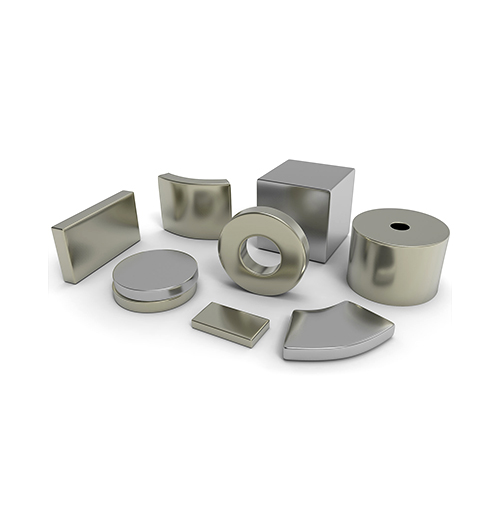
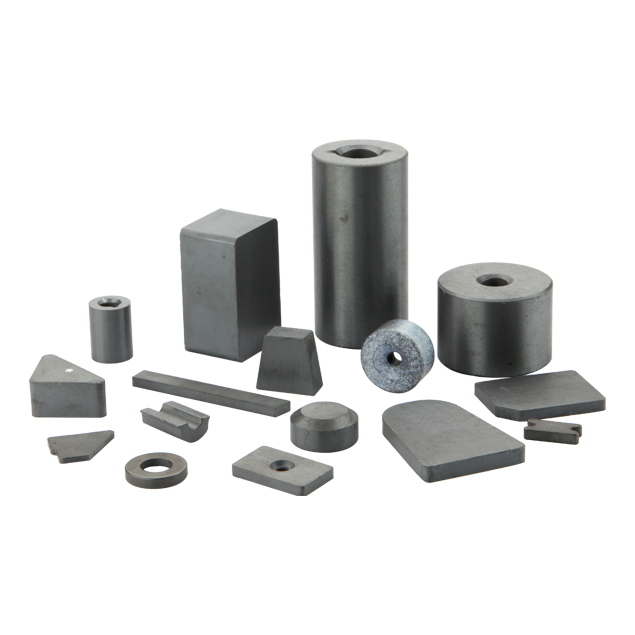
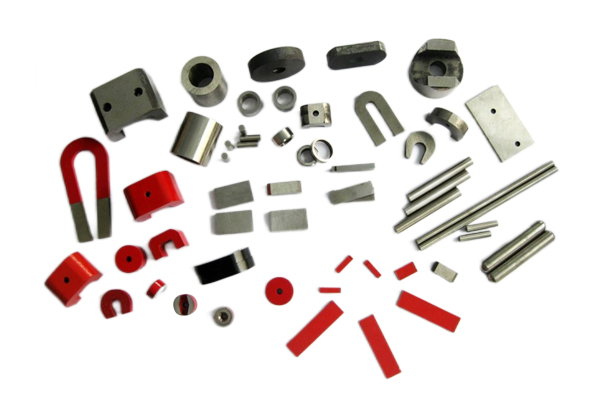
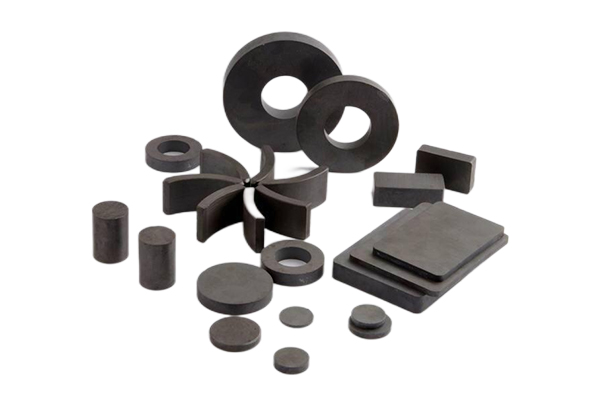
Neodymium iron boron (NdFeB) - commonly known as neodymium iron boron or NEO magnets - are rare earth magnets made by alloying neodymium, iron and boron, and are the strongest permanent magnets available today. Of course, NdFeB can be subdivided into sintered NdFeB, bonded NdFeB, compression injection NdFeB and so on. However, in general, if we don't specify which kind of Nd-Fe-B, we will refer to sintered Nd-Fe-B.
Samarium Cobalt (SmCo) - also known as rare earth cobalt, rare earth cobalt, RECo and CoSm - are not as strong as neodymium magnets (NdFeB), but they offer three major advantages. Magnets made from SmCo can operate over a wider temperature range, have a high temperature coefficient and are more resistant to corrosion. Because SmCo is more expensive and has these unique properties, SmCo is often used in military and aerospace applications.
Aluminum-Nickel-Cobalt (AlNiCo) - All three main components of AlNiCo - aluminum, nickel and cobalt. Although they are temperature resistant, they are easily demagnetized. In some applications, they are often replaced by ceramic and rare earth magnets. AlNiCo is often used in everyday life for stationary and teaching applications.
Ferrite - Ceramic or ferrite permanent magnets are usually made from sintered iron oxide and barium or strontium carbonate and are inexpensive and easy to produce by sintering or pressing. This is one of the most commonly used types of magnets. They are strong and can be easily demagnetized.
Permanent magnets can be divided into the following categories through the distinction of different versions:
Sintering-is the transformation of powdered materials into dense bodies and is a traditional process. People have been using this process for a long time to produce ceramics, powder metallurgy, refractory materials, ultra-high temperature materials, etc. In general, the dense body obtained by sintering after the powder has been molded is a polycrystalline material with a microstructure consisting of crystals, vitreous humor and pores. The sintering process directly affects the grain size, pore size and the shape and distribution of grain boundaries in the microstructure, which in turn affects the properties of the material.
Bonding - Bonding is not a unique version in the strictest sense of the word, as bonding is the bonding of sintered materials together by means of an adhesive. In this way the eddy currents generated during magnet application can be somewhat reduced, substantially improving the reliability of the magnet during application.
Injection Molding - Injection molding is a method of producing shapes for industrial products. Products are typically molded using rubber injection molding and plastic injection molding. Injection molding can also be divided into injection molding molding method and die casting method. Using injection molding as a method of production can provide more possibilities for magnet shapes. Due to the properties of the magnets themselves, sintered magnets are often very brittle and difficult to produce for specific shapes. The injection molding method often makes more shapes possible by incorporating other materials.
Flexible Magnet - A flexible magnet is a magnet that can be bent and deformed and its magnetic properties remain intact. These magnets are usually made of flexible materials, such as rubber, polyurethane, etc., and are mixed with magnetic powder to make them magnetic. Unlike traditional hard magnets, flexible magnets are more flexible and malleable, so they can be cut and bent in various shapes as needed. They also have better adhesion properties and can be used for a
Solenoid: The opposite of a permanent magnet is an electromagnet, which can also be called a temporary magnet. This type of magnet is a coil that forms a loop by wrapping wires around a core material, also known as a solenoid. By passing electricity through the solenoid, the magnetic field used to magnetize the electromagnet is generated. The strongest magnetic field occurs inside the coil, and the strength of the field increases with the number of coils and the strength of the current. Electromagnets are more flexible and can adjust the direction of the magnetic field according to the direction of the current, and can also adjust the current strength as needed to achieve the desired magnetic field strength
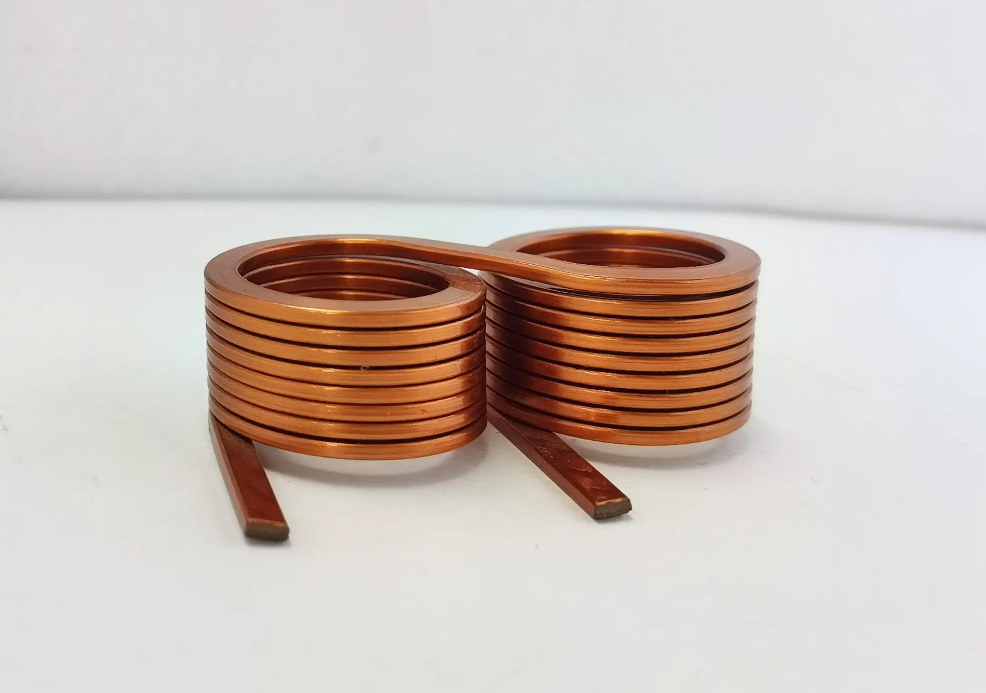
Post time: Apr-21-2023



